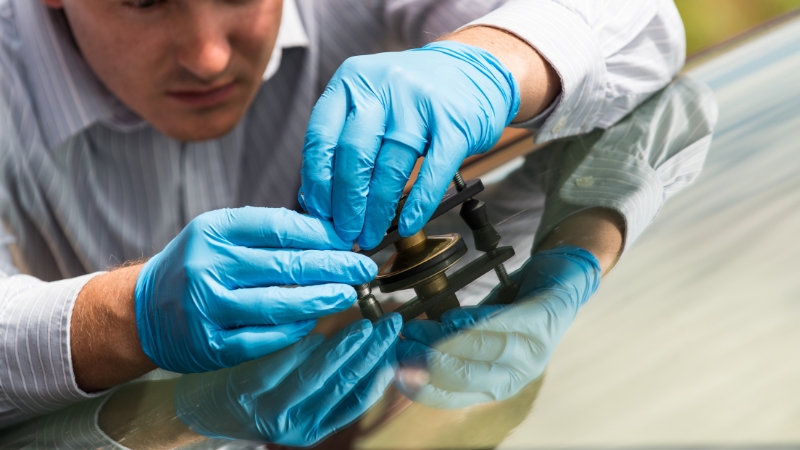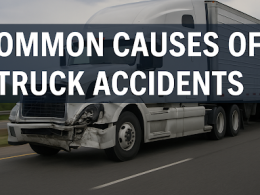Introduction
Windshield replacement is a common automotive service in Calgary, ensuring vehicles remain safe, functional, and compliant with safety regulations. While the focus is often on safety and performance, the environmental impact of windshield replacement is an important consideration that is often overlooked. From manufacturing and disposal to recycling practices, every stage of windshield replacement has ecological implications. Understanding these impacts helps drivers make informed choices while encouraging more sustainable practices within the auto repair industry.
This article explores the environmental aspects of Windshield Replacement in Calgary, highlighting responsible disposal methods, recycling initiatives, and the role of professionals in reducing environmental harm.
Materials Used in Windshield Manufacturing
1. Laminated Glass Composition
Modern windshields are primarily made of laminated glass, which consists of two layers of glass with a plastic interlayer, typically polyvinyl butyral (PVB). This design enhances safety by preventing shattering during impact, but it also introduces complexity in recycling.
2. Adhesives and Sealants
During windshield replacement, adhesives and sealants are used to bond the glass to the vehicle frame. These materials are often chemical-based and require careful handling to avoid environmental contamination.
3. Frame Components and Trim
Replacement may involve removing and reusing or disposing of trim, moldings, and metal components. These materials, if not recycled, contribute to landfill waste and increase environmental burden.
Waste Generated During Windshield Replacement
1. Broken Glass
Old windshields often arrive at service centers cracked or shattered. Improper disposal of broken glass can pose risks to humans, wildlife, and soil quality.
2. Adhesive Residue
Residual adhesives left after windshield removal may contain volatile organic compounds (VOCs) that can contribute to air pollution if not handled correctly.
3. Packaging Materials
Windshields are transported in packaging materials such as cardboard, foam, and plastics. Without recycling programs, these materials add to municipal waste.
Recycling and Responsible Disposal
1. Glass Recycling Programs
Many Calgary auto shops partner with recycling facilities to process old windshields. Specialized processes separate glass from the plastic interlayer, allowing the glass to be reused in construction, road materials, or new glass products.
2. Plastic Interlayer Handling
The PVB layer can be challenging to recycle due to its adhesive properties. Some facilities repurpose it for flooring, roofing, or other industrial applications, reducing landfill contributions.
3. Adhesive and Sealant Management
Certified technicians follow protocols to safely dispose of adhesives and sealants. Proper containment and disposal prevent harmful chemicals from leaching into soil and water.
4. Metal and Trim Recycling
Metal and plastic components removed during replacement can be sorted and sent to appropriate recycling streams, further reducing environmental impact.
Eco-Friendly Practices in Windshield Replacement
1. Use of Low-VOC Adhesives
Some professional services in Calgary use low-VOC adhesives, reducing emissions during installation and curing. This practice minimizes air pollution and health risks for technicians and clients.
2. Minimizing Waste Through Precision
Certified technicians employ precise cutting and installation techniques to reduce breakage and material wastage, conserving resources and lowering overall environmental impact.
3. Partnerships with Recycling Facilities
Collaborating with specialized recycling facilities ensures that old windshields and associated materials are processed responsibly, supporting a circular economy in the automotive sector.
4. Vehicle Maintenance to Extend Windshield Life
Encouraging vehicle owners to maintain their windshields, such as avoiding unnecessary stress and promptly repairing minor chips, can reduce the frequency of replacements and associated environmental burdens.
Regulatory and Industry Standards
1. Environmental Regulations in Calgary
Local regulations mandate the proper disposal of automotive glass, chemicals, and other waste products. Compliance ensures that windshield replacement practices do not harm the environment.
2. Industry Certification Programs
Organizations such as the Automotive Recyclers of Canada and other certification bodies provide guidelines for eco-friendly disposal, recycling, and waste management in auto repair services. Certified shops adhere to these standards to reduce ecological impact.
The Role of Professionals
1. Expertise in Safe Disposal
Certified windshield replacement technicians understand the environmental implications of improper disposal. Their training ensures that all materials are handled, processed, or recycled according to best practices.
2. Promoting Sustainable Practices
Professional services can educate vehicle owners on the environmental aspects of windshield replacement, encouraging responsible decision-making and adherence to eco-friendly practices.
3. Reducing Carbon Footprint
By using energy-efficient processes, minimizing waste, and partnering with local recycling facilities, professional services contribute to lowering the carbon footprint of each replacement operation.
Challenges in Reducing Environmental Impact
1. Complex Material Composition
The combination of glass, plastic, adhesives, and metal complicates recycling, requiring specialized equipment and processes.
2. Lack of Awareness
Many vehicle owners and smaller repair shops may not be fully aware of eco-friendly disposal and recycling options, leading to avoidable environmental harm.
3. Transportation and Logistics
Shipping old windshields to recycling facilities involves fuel consumption and emissions, particularly if local processing options are limited.
Future Trends
1. Innovative Recycling Techniques
Emerging technologies are improving the efficiency of separating glass from plastic interlayers, enabling higher recycling rates and more sustainable reuse.
2. Green Adhesives and Materials
Research into biodegradable adhesives and alternative materials promises to reduce chemical waste and environmental hazards in windshield replacement.
3. Industry-Wide Sustainability Initiatives
Auto repair networks in Calgary are increasingly adopting sustainability initiatives, including carbon-neutral operations, energy-efficient workshops, and partnerships with eco-conscious suppliers.
Benefits of Environmentally Responsible Windshield Replacement
1. Reduced Landfill Waste
Proper recycling and disposal prevent broken glass, plastics, and metals from accumulating in landfills.
2. Conservation of Resources
Recycling old windshields allows materials to be reused in construction, manufacturing, and other applications, conserving raw materials.
3. Lowered Pollution Levels
Minimizing VOC emissions and chemical runoff protects air and water quality in urban environments like Calgary.
4. Enhanced Brand Reputation
Auto repair shops that prioritize sustainability attract environmentally conscious clients and demonstrate corporate responsibility.
Conclusion
The environmental impact of Windshield Replacement in Calgary extends beyond the immediate repair, affecting waste management, resource consumption, and chemical emissions. By using certified technicians, eco-friendly adhesives, and responsible recycling practices, vehicle owners and service providers can significantly reduce this impact.
Understanding the ecological implications encourages sustainable decision-making, promotes resource conservation, and aligns with environmental regulations. Choosing professional services that prioritize environmentally responsible practices ensures that safety, performance, and ecological stewardship go hand in hand.












